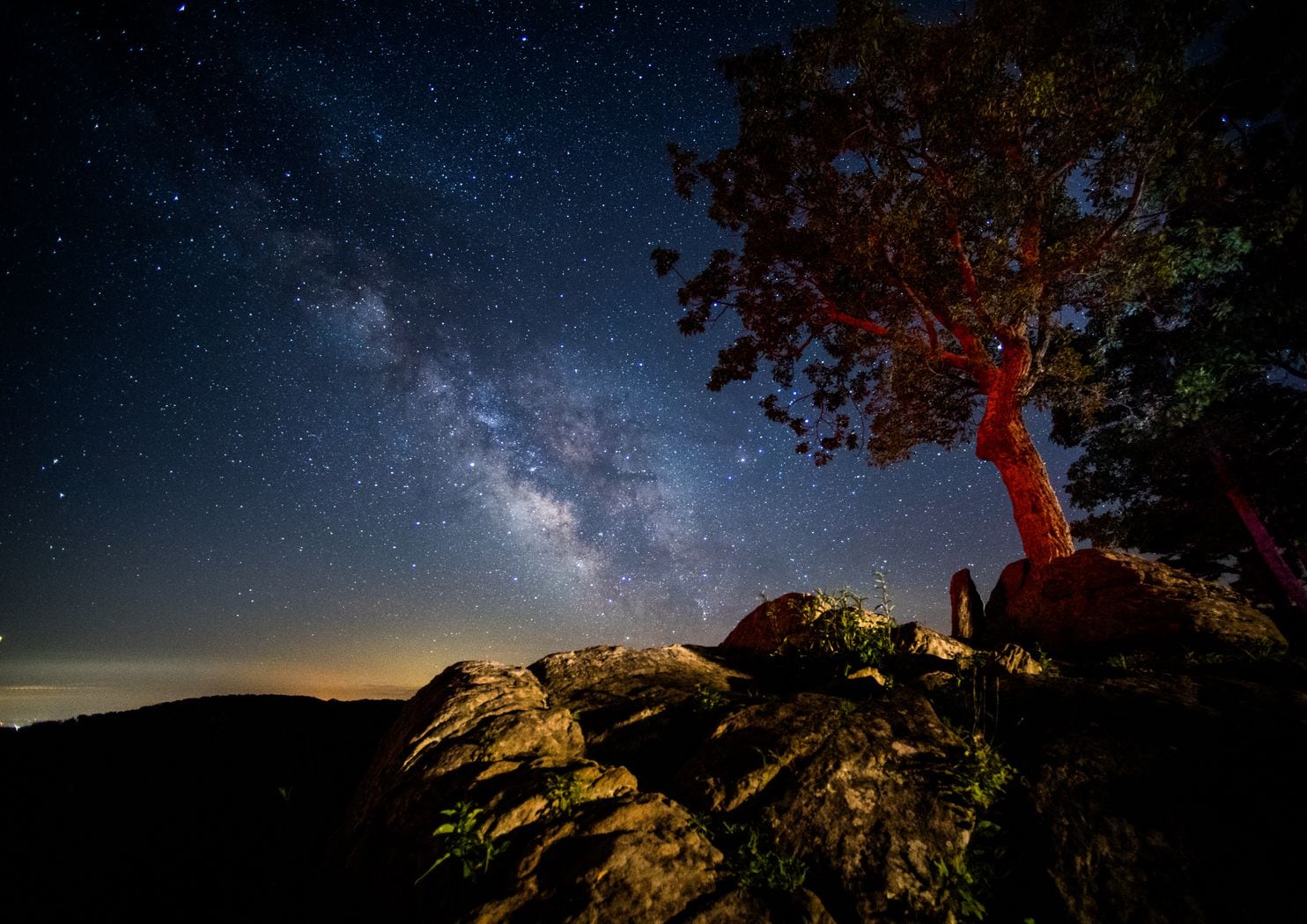For the best stargazing, head to a patch of dark sky

To see meteors, stars and star groups, it’s best to head at least 60 miles from a big city. One such place is Shenandoah National Park, above, where the Milky Way can be seen above Virginia’s Blue Ridge Mountains. (Jonathan Newton/The Washington Post)
Stargazing is fun to do in the warm summertime, especially during the Perseids meteor shower, which peaks in mid-August. Not every location is a good spot to watch, however. With a little planning, you and your family can enjoy the stellar show.
Get out of the city
For the best stargazing, you need to get away from outdoor lights, many of which block starlight through light pollution. Light pollution is extra or poorly directed artificial light that can have consequences for humans, animals and the climate.
Cities create such a nighttime blaze across the United States that about 80 percent of the population never see the Milky Way, according to the National Aeronautics and Space Administration.
To escape that glow, travel at least 60 miles from a major city and find a campground or other spot with low light. Go to a field, lake area or somewhere with a horizon that’s not blocked by trees. Try to look on a clear, moonless night, as the moon tends to block starlight.
Take a star chart with you or download a star constellation app on a cellphone. Remember that stars twinkle, planets don’t, and if the object moves across the sky, it’s probably a satellite. If it leaves a streak, it’s a meteor.
Noteworthy spots
There are parts of the world officially noted as great places to view meteors, stars such as the Betelgeuse, and star groups such as the Big Dipper. The International Dark Sky Association in Arizona classifies them as Dark Sky Reserves and Dark Sky Parks. Reserves consist of a large, dark core area ringed by cities or towns that have strict light pollution controls. There are 16 reserves in the world, one of which is the 1,416-square-mile Central Idaho Dark Sky Reserve. It may have the clearest skies in the Lower 48 states.
“It is a unique resource,” says Brian Jackson, an associate professor and astronomer at nearby Boise State University. “The skies there are spectacular.”
Dark Sky Parks, which are usually much smaller than reserves, can be found in dozens of other places. These areas have dark-sky programs for visitors and outdoor lighting that doesn’t cause light pollution.
Although the bulk of them are in the western United States, eastern locales include: Cherry Springs State Park in Susquehannock State Forest in Pennsylvania; James River State Park near Lynchburg, Virginia; Kissimmee Prairie Preserve State Park in central Florida; and Rappahannock County Park near Washington, Virginia.

Comet Neowise is visible above the Green Bank Telescope at the Green Bank Observatory in West Virginia. (Jee Seymour Photography)
Other spots with clear skies include the Shenandoah National Park in Virginia and the Green Bank Observatory in Pocahontas County, West Virginia. The observatory is closed because of the coronavirus pandemic, but visitors can walk about the grounds, where some of the world’s largest radio telescopes are located.
Bring back the dark
Many cities are working to reduce light pollution. In Idaho, where dark skies are a major draw for tourists, cities have “dark sky ordinances,” laws that require light fixtures that direct light to the ground rather than toward the sky. They also require that outdoor lights be “warmer” colors on the lower part of the color spectrum instead of much brighter blue-hued lights, such as those in some car LED headlights. Not only do these “blue” lights block out the stars, they also disturb animals’ sleeping patterns.
Idaho has worked to get its cities to tone down outdoor lights.
“I am very aware of light pollution,” says Betsy Mizell, director of the Idaho Conservation League, which helped four counties in Idaho apply for Dark Sky Reserve status. “We’re getting further and further away from life [in the wilderness] — some people never see the Milky Way or a shooting star. I think that is really sad.”






